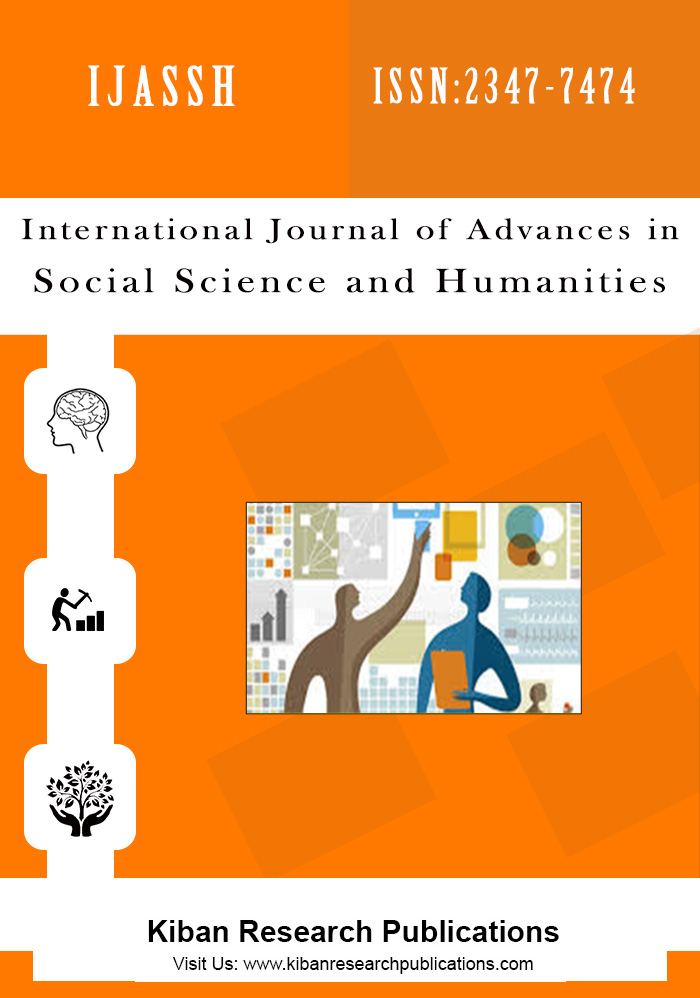An Analysis of the Effect of Students’ Geographical Background on Equity in Form One Admission in National Secondary School Clusters in Kenya
Abstract
AbstractThrough its educational policies and plans, Kenya is among countries whose aim is to achieve equity in access to secondary school education by pupils from different background as envisaged in Vision 2030 and Sustainable Development Goals. However, this dream still remains elusive. This paper provides empirical evidence of the effect of students’ geographical background on equity in form one admission in national secondary school clusters in Kenya using data from a sample of 1935 form one students admitted in Kenyan’s 103 national secondary schools in the year 2016. The results of the multinomial logistic regression indicate that even after holding other predictor variables constant, students’ geographical background significantly affected their admission to the national secondary schools clusters. Consequently, there is need to develop sound and inclusive strategies to accelerate equity in form one admission to national secondary school clusters irrespective of geographical background of the students. The Ministry of Education should design policies that equalise opportunities for students from different geographical background in accessing all national secondary schools clusters.Â
References
Alari O.J., Migosi J., Evusa Z. (2013). Teachers’ and students’ perceptions about form one placement of students in public secondary schools in Mumias Division, Kakamega County, Kenya. Univertsal J.du.General Studies, 2(5), 167- 174.
Amitava, R.,Manojit, D., Saswata, S. and Braja, G. M.(2010). Factors Affecting
Students’ Academic Performance: A case study in Agartala Municipal
Council Area. Journal of Sociology; Volume 7, Number 2. Bangladesh.
Andersson, R., J. M. Quigley and M. Wilhelmsson, (2009). Urbanization, productivity, and
innovation: Evidence from investment, Journal of Urban Economics 66, 2-15
Becker, S. O. and F. Siebern-Thomas, (2007). Schooling infrastructure, educational attainment and earnings. Mimeo.
Catholic News Agency for Africa (CANAA) (2015). www.canaafrica.org/ index.php/home/16-latestnews/192-church-in-kenya-antsgovernment-to-review-criteria-for-secondary-school-admission.
Cheers, B. (2000). Rural disadvantage in Australia. Australian Social Work, 3
(1), 5-13.
Chiuri, L.W., and Kiumi, J. K. (2005). Planning and Economics of Education.
Egerton:
Ciccone, A. and E. Papaioannou , (2009). Human capital, the structure of production,
and Growth, Review of Economics and Statistics 91, 66-82.
Epari, E., Maurice, M., Alex, E., Moses, E., Moses, O., and Moses, N. (2011).
Factors Associated With Low Achievement Among Students From
Nairobis Urban Informal Neiborhoods .Urban Education, 42(5),1056
-1077.doi:10.1177/0042058911400323.
Farooq, M. S (2011). Factors Affecting Students’ Quality of Academic Performance: A case of secondary school level; Journal of Quality and Technology Management. Volume VII.
Ferge, Z. (1980). ‟Regional Disparity of Education Development in Hungary‟. In Regional Disparity in Educational Development: Diagnosis & Policies for Reduction, UNESCO: IIEP, Paris.
Hijazi., S. T and Raza Naqvi., S. M. M (2006). Factors Affecting Students’
Performance: A case of Private Colleges, Bangladesh E-Journal of
Sociology, Volume 3, Number 1, and January.
In2 East Africa (2013) Kenya: Form one intake puzzle after end of ranking order. www.in2eastafrica.net/kenya-form-one-intake-puzzleafter- end-of ranking-order/
Mlozi, M.R.S., Kaguo, F.E., and Nyamba, S.Y. (2013).Factors Influencing Students’
Academic Performance in Community and Government Built Secondary
Schools in Tanzania: A case of Mbeya Municipality; .
Muindi, B. (2012) Parents doubt new national schools. Daily Nation, January 15th2012.[URL:http://www.nation.co.ke/News/parents+doubt+new+national+schools+/-/1056/1306220/-/7y2xw1z/-/index.html (Accessed on03/03/2017)]
OECD (2007). No More Failures: Ten Steps to Equity in Education, ISBN 978-92-http://www.academicjournals.org/ERR64-03259-0, € 24, 155 pages.
OECD. (2011). “Does where a student lives affect his or her reading performance?†in PISA 2009 at a Glance, OECD Publishing. http://dx.doi.org/10.1787/9789264095250-24-en
Onderi, H. and Makori, A. (2014). Understanding Realities, inequalities and implications associated with policy and practice in form one selection in secondary schools in Kenya. British Journal of Arts and Social Science. 17(1), 146-164. Retrieved on 30/05/2017 from http://www.bjournal.co.uk/BLASS.aspx
Psacharapoulos, G.,&Woodhall, M. (1985). Education for Development. An Analysis of Investment choices, Washington D.C.: Oxford University Press.
Republic of Kenya (2005). Sessional Paper NO. 1 of 2005 on a Policy Framework for Education, Training and Research. Nairobi: Government Printers
Yusuf, M. A. and Adigun, J. T. (2010). The influence of school sex, location and type of
students’ academic performance. International Journal of education Science. (2) 81-85.




